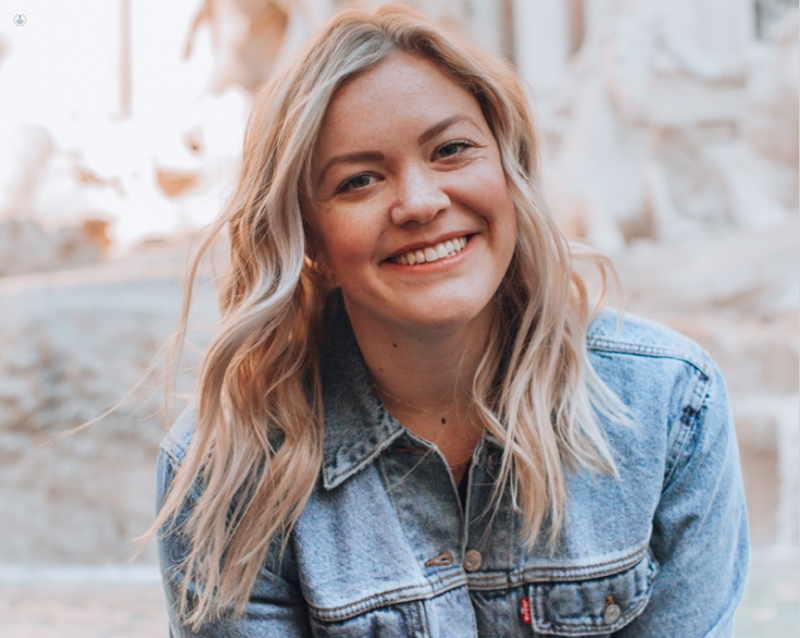Breast reduction surgery: how it’s done and aftercare
Escrito por:Breast reduction surgery, also known as reduction mammaplasty, is a procedure used to remove excess tissue, fat, and skin from the breasts.

Leading consultant plastic surgeon, Professor Charles Malata, recently shared with us how breast reduction surgery should be carried out, discussed whether breast reductions can be done with liposuction alone and also gave information on mammaplasty aftercare.
Can a breast reduction surgery be done just with liposuction?
Yes, this is possible but it is quite rare to reduce the breasts without scars by using liposuction alone. This is only feasible in younger patients who have only mildly enlarged breasts and excellent skin quality i.e., skin with good elasticity, thickness and no stretch marks. In general, liposuction alone can also be used to treat mildly uneven breasts by reducing the size of the larger breast but again only if it has favourable skin as I have previously described.
How do you determine the new size of the new areola?
It is important that I hear from my patients what size areola they prefer but, in all cases, the wide areola found in large breasts is made much smaller to match the new reduced breast size. I use absorbable (“dissolving”) sutures to reduce the scarring and often undertake minor liposuction to the outside ends of the incision to avoid bulges at the ends of the scars, the so-called “dog ears”. By a combination of these various steps, I achieve an attractive, uplifted and natural shape of a patient’s breasts.
How long does a breast reduction surgery take?
The operation to reduce and reshape the breasts usually lasts 2-3 hours and is done under general anaesthetic.
How long does it take to recover from a breast reduction surgery?
The hospital stay varies between 1–2 days depending on the size of the breasts, the output from the drains, pain control afterwards and whether another cosmetic surgery is carried out at the same time. The average stay is 2 nights in my practice.
What does aftercare for a reduction mammaplasty involve?
Antibiotics (to prevent infection) and any anti-sickness drugs are given to patients intravenously for the first 24 hours. The risk of infection is low while some patients may experience nausea and/ vomiting caused by the general anaesthetic or strong painkillers. You will also be prescribed adequate painkillers to take both by mouth and/ or by injection as needed. The next day you will be able to get out of bed and the drains may be removed.
It is recommended that a responsible adult accompany you home on discharge and you should not drive especially when you are on the strong pain (narcotic) medications. Once at home you should only take the pain medication prescribed and must complete any course of antibiotics if given to you.
You can shower or bathe in a shallow bath after 48 hours but the incisions and dressings must remain dry to prevent any infection. This can be done by covering the incisions with water-proof dressings and avoiding soaking the wounds in a bathtub.
Strenuous activity (such as exercise, lifting heavy objects, running, etc) should be avoided for the first 3 to 4 days. You can usually drive after 2 weeks. Time off work can range between 2 to 4 weeks, depending on the nature of your job. A supportive (sports-type) bra must be worn for 4 to 6 weeks after surgery. Provided the wounds have healed adequately, you can return to doing sports or the gym after 6 to 8 weeks.
The special contouring bandages and dressings on your chest are designed to support specific parts of the breasts and help to shape them. These should be left intact until you come back for the 1st outpatient visit. Some discomfort and a little oozing (which might stain the dressings) are expected and should not worry you unnecessarily. If you are in any doubt about anything, please contact Professor Malata on his emergency cell phone using the number given to you during the outpatient consultation.
Follow up visits to monitor the healing process will be scheduled and the last planned visit is around 6 months to check the final shape and size of your breasts. I'm happy to see patients who have undergone the surgery with me at any other time, free of charge.
What are some of the alternatives to breast reduction surgery?
a) Weight loss: this helps to reduce the breasts and is helpful in relieving the symptoms in some patients.
b) No surgery at all: as with any cosmetic surgery, this is always an option and you have to weigh the benefits and risks of this operation for you before deciding to undergo any surgery. You might benefit from physiotherapy, support bras, and exercise.
c) Loose clothes: help to camouflage large breasts and may act as a temporary measure whilst thinking about or waiting for surgery.
d) Just a breast lift: patients with only saggy breasts will benefit from a breast lift alone (mastopexy) without necessarily reducing the size of their breasts. This removes the excess skin, uplifts and reshapes the breasts.
If you are unhappy with the shape and size of your breasts, we recommend booking an appointment with a leading consultant plastic surgeon such as Professor Charles Malata who specialises in breast cosmetic surgery (breast augmentation, breast reduction, breast lifts, breast asymmetry correction and combinations such as augmentation-mastopexy). Visit his profile today for more information.


